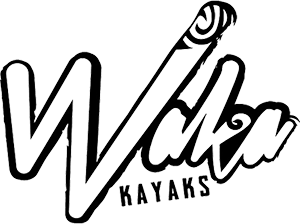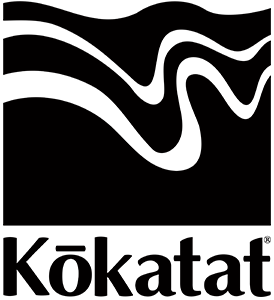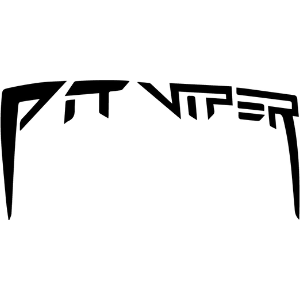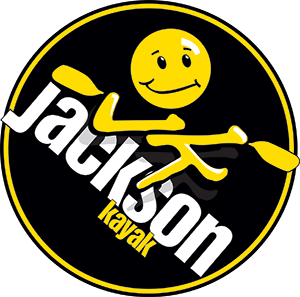Presented by

The art of story telling, about the places and the people in our community.
[ Full Interviews with Top 3 Long Film Finalists Featured Below ]
• WINNER •
Kwanza
film by: Mike Dawson
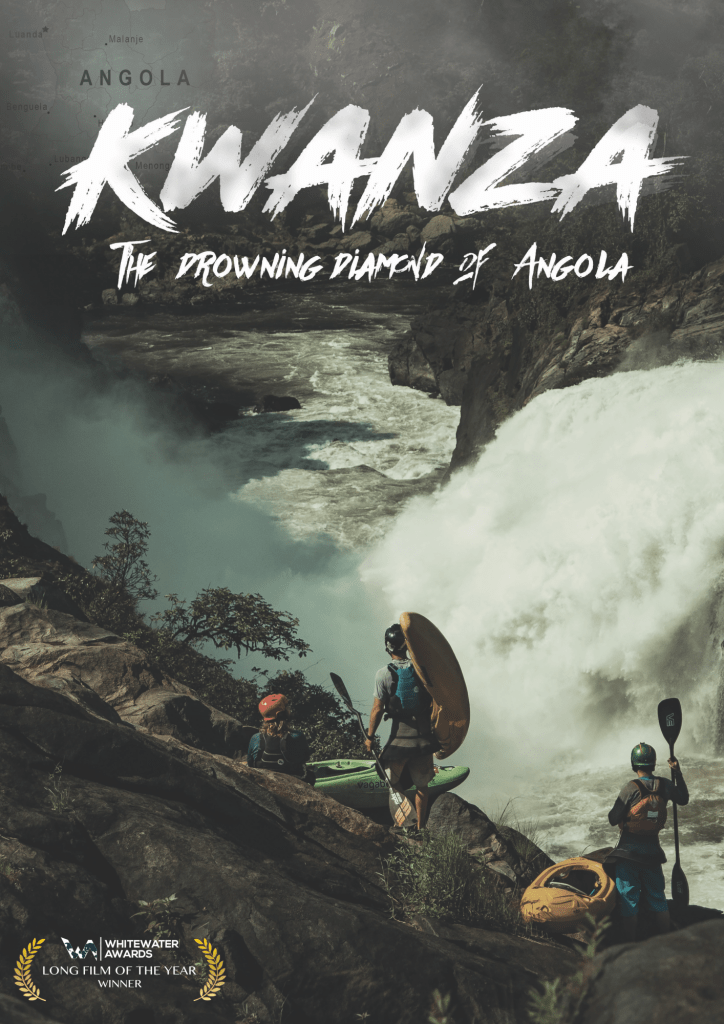
Whitewater Awards: Where do you live, and where you from?
Mike Dawson: I’m from Okere Falls, in New Zealand.
WA: How did you get into film making?
MD: I’m mostly into photography, but have been involved in 2 films now – our doco from Indus & this latest from Kwanza. I think it’s the natural evolution to share / tell the stories of the places we’re lucky enough to get to travel to..
WA: What does Kwanza mean? Why is this the title?
MD: The Kwanza is the name of the River. It’s a beautiful river and the heart of Angola, flowing from the Bie Plateau down to the Atlantic providing so much from Diamonds, to fish to electricity to world class whitewater.
WA: What inspired you to make this video? Why this river?
MD: I found the Kwanza on Google Earth about 8 years ago and had been trying to make it happen. We went in 2015 and returned to run more. It’s a river a lot of people have talked about but just getting access is tough.
(See teaser below)
WA: Who are the paddlers in this film?
MD: Jake Holland from the UK a classy paddler and awesome Cinematographer & Dewet Michau from South Africa the true expeditionary, nothing phases this guy plus he shreds on the river.
WA: What made this project different from anything else you have done?
MD: There’s so much in play around the river — Land mines, wild life, geo political factors, corruption, isolation it’s all there and that’s before you get to paddle on the rapids!
WA: What draws you to Africa? Is it difficult sorting logistics?
MD: It’s such an amazing continent. I love it — just being out there on the mission. It’s scary at times, but mostly it’s just wild and untouched.
WA: What do you want people to know about the release date or details of this film?
MD: We’re hoping to get this out by the Northern Hemisphere Summer – so stay tuned!
WA: Short films seem to be the jam right now with short attention spans trending, but what inspires you to make longer ones..?!
MD: Short films are epic for snippets, but sometimes you’ve got to dive a bit deeper, tell a bit more and share whats out there.
WA: Do you prefer shooting photos or videos?
MD: For me photos – Film is rad… But nothing can trump a banger still image.
WA: Favorite project to date.
MD: Indus – The crew, the place, the whitewater.
WA: Favorite rider(s) / places to film?
MD: Aniol for stills. So classy and always flying.
WA: Favorite Camera to use? Is it different than you use for photos?
MD: R5 for stills which actually doubles pretty good as a film camera.
WA: Who has inspired you in the kayaking world of film? and who outside kayaking?
MD: Rush – Love watching his stuff and can’t wait for Legacy to drop!
WA: One thing you NEVER forget for a shoot other than your camera equipment.
MD: A good fucking attitude. Always pack that man.
WA: Other than your content who would you recommend watching or following for film work?!
MD: There’s so much goodness out there. Flow Motion is cutting edge in aerial. Jan Kasl for stills. It’s all good!
WA: Where is a place we can see more of your work?!
MD: Just follow along @mrmikedawson.
WA: Words of wisdom to those wanting to make it in the film game?
MD: Get after it.
• RUNNER UP •
The Tears of Shiva
film by: Mikel Sarasola
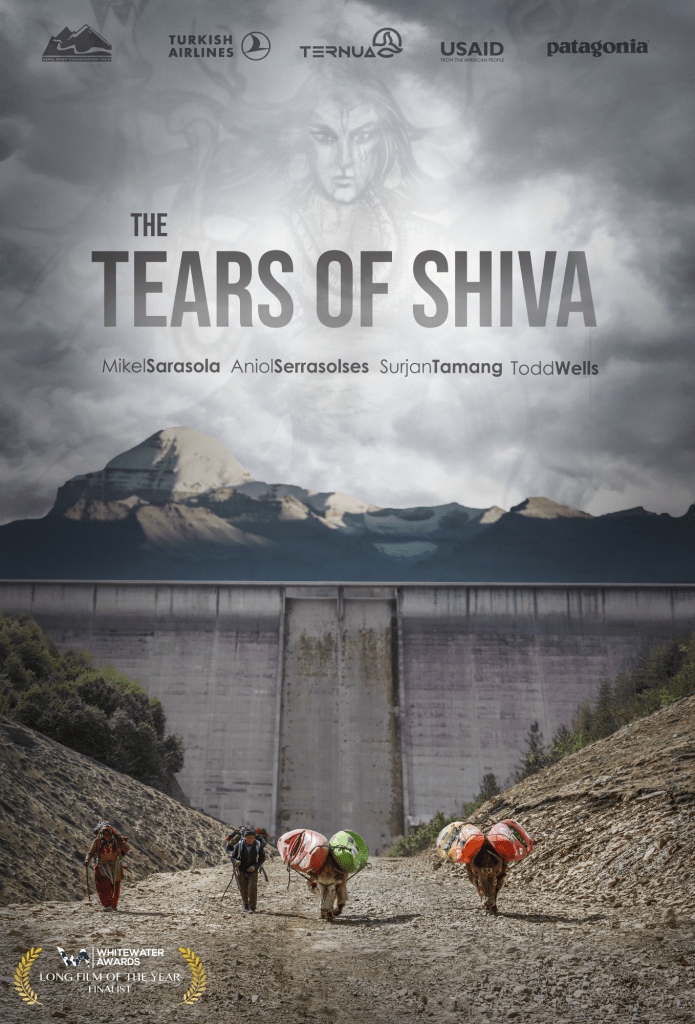
Whitewater Awards: Where do you live, and where you from?
Mikel Sarasola: I live in San Sebastian (Basque Country), where I was also born, a small city in northern Spain, close to the Pyrenees mountain range. It’s well known for its beaches, the good surfing and the gastronomy, but kayaking is not a very popular thing here. We have a strong slalom club that trains in the sea and in a very shitty slalom course (class II) that is in a 30min drive from the city, but we have some of the best kayakers in the country here. But also, 15min from home we have the Leitzaran river (class IV-V), one of the best creeks in northern Spain, reason why I do whitewater kayaking, that runs mostly in the winter season. The extreme kayaking community is tiny here (not even 10 people), so I have to paddle alone too often…
WA: How did you get into film making??
MS: Kayaking has taken me to incredible places and adventures and I started to film those trips to show my friends what we were doing out there. It has always been my hobby, but in 2014 I did a documentary film about an expedition I did with two friends in Patagonia, exploring new areas for kayaking and linking by kayak two of the classic and most famous areas of southern Patagonia, el Chaltén and Torres del Paine. My friends suggested that I enter this film to a Film Festival and surprisingly for me it was accepted for the official selection of the Mend Film Festival (one of the biggest festivals in Europe). But this was not the end, we also won an award in this festival and then the movie did a world film festival tour and was awarded more. So I would say that was the start for me into the documentary films scene. You can find this movie for free in the following link: Caminos de Agua Patagonia
WA: Why did you name the film Tears of Shiva? What does that mean to you? Why is this the title?
MS: The Karnali river, the one we paddle in the movie, comes from the Mount Kailash area in Tibet. This mountain is popular for being the Sacred mountain and history says that in the summit of the Kailash lives Shiva god. Now, the Karnali is threatened by a huge hydropower dam construction that will destroy all the lower areas of the Karnali, heavily transforming all the biodiversity and the ecosystems. Our expedition wanted to paddle and document what could be the last descent of one of the last free flowing rivers in Nepal and show to the world what is going on in this Sacred river. We could imagine Shiva crying on the top of the valley, so we felt like kayaking on the Tears of Shiva.
WA: What inspired you to make this video? Why this river?
MS: As explained above, the Karnali is in threat now. This river is the Sacred river of the country and home of a variety of biodiversity. It is also one of the best rivers in the world, if not the best, for multi day whitewater kayaking providing more than 400km of sick class 4-5. Now a huge dam construction project is planned to be built and change all the area forever. The commercial rafting section will disappear and the very rich biodiversity will be transformed. The lower areas are home to multiple peculiar plants and animals like rhinos, ganges river dolphins, crocos or the golden masheer, naming just some. They all live from the sediments that the Karnali brings to these lower areas and that won’t arrive if the river is dammed. But the history of this river goes much further and this is what you can find in the film, and the reason why we chose this river for the film.
(see teaser below)
WA: Who are the paddlers in this film?
MS: We set an international team of some of the best expedition kayakers in the world. Todd Wells (USA), Aniol Serrasolses (ESP), Surjan Tamang (NEP) and myself, Mikel Sarasola (ESP) paddle together to accomplish the third descent of the upper gorges of the river, and to discover some areas that were still unrun.
WA: Was your group a good size or would you prefer less or more paddlers?
MS: I always say that 4 members is the perfect number for a team in an expedition. There are not too many boats in the water, you can always split the team into two if you need some people in the riverbank setting safety, filming… and if something bad happens to any member one person can be with the injured kayaker and two can go in search of help. I always try to have 4 person teams on expeditions.
WA: What made this project different from anything else you have done?
MS: I would say that the river itself. The longest and biggest river of Nepal and to be able to paddle from the Tibetan Plateau all the way down to the deep jungle on the border with India. Over 400km of very high quality whitewater. Tell me where else you can find more rivers like this one and I will head there tomorrow.
WA: What draws you to showcase Nepal? Is it difficult sorting the travel or filming logistics?
MS: Nepal is a very unique country. The country of the Himalayas has become one of the most important places for nature and adventure trips. But for the last 20 years everything is changing so fast that the country is being pressed to its limits. Modernization means that you have to deal with new problems and they need to be minutiously planned. But when you change so fast it’s hard to plan properly and if the country is not in good hands, it can destroy the country. This is what is happening right now to Nepali rivers, to adapt to the energy needs of the modernity all main rivers in the country are being dammed and nature, the biggest treasure of the country, totally destroyed. As kayakers and nature lovers, we felt the need to tell this story. Planning the expedition was not too hard because we had the support and help of the Nepal River Conservation Trust Foundation, who are doing a great job trying to protect the rivers of the country. They have all the contacts to move around the country, so it helped a lot to organize the expedition.
WA: What other groups had run this river before? You guys were the first to descend all the gorges?
MS: The upper section of the river was first run back in 1999, by an American team formed by Scott Lindgren, Charlie Munsey, Willie Kern and Mark Hayden. They got to the put-in from the Tibetan Plateau after being at the foot of Mt Kailash. We thought we were doing the second descent almost 20 years later, but a few days before heading to the river one American guy (now I can’t remember the name) contacted us saying that he had a solo decent of this upper section some few years before. Incredible achievement. So, from what we know we did the third descent of this upper section of the Humla Karnali river.The first gorge of the river is named Shivas Gorge. It is one of the most ancient rock formations in the world. This gorge is described by the first expedition as one of the most intimidating and committing river experiences they have ever had in Nepal (if not anywhere). But due to the high flows the team portaged the lower gorge – something that we wanted to accomplish. We had less water that this first expedition so we finally managed to run this gorge, that we called the Ganesh Gorge, which we found even harder than the upper section.
WA: Would you prefer a different water level? Different time of year?
MS: I think we had the best flows we could to be able to paddle all the river sections. It was a bit too low for Shivas gorge but perfect to explore and run through most of the Ganesh gorge. As it was spring, all tributaries brought water into the river so the river was even higher than in November in the lower part of the river.
WA: What month were you in there?
MS: It was early April, springtime. I would say it is the best season. Also the landscapes were beautiful, all rice terraces colored in an intense green, that changes a lot compared to the yellow of the autumn (I previously paddled the Humla in November 2016).
WA:What was your favorite part of paddling the Karnali? Favorite part of life styling in Nepal?
MS:The best of paddling the Karnali is that you are in the river just focused on kayaking for over 10 days. You just kayak, eat, sleep and repeat for days, away from roads, people and cities. I love that feeling. Of course the landscapes and the rapids are also next level.
WA: What do you want people to know about the release date or details of this film?
MS: I just want to let the people know that they can watch the full film online in the following link: https://vimeo.com/ondemand/thetearsofshiva
WA: Short films seem to be popular right now with short attention spans trending, but what inspires you to make longer ones..?! Do you like making long films or short films more?
MS: The length I like the most is a film of about 30min. Not too short that you have to just focus on one main thing and you can tell more stories around the main idea. I like to show good kayaking but going deeper into other stories too. The river is just one of the reasons why we choose these adventures, and normally not the main theme of a movie. I like the rhythm of longer films.
WA: Favorite project to date?
MS: Exploring the Kurssuaq River in Greenland back in 2017. We found one incredible river that shows the potential of this area for whitewater kayaking. I’ve got one film but haven’t been released yet. I should go for it soon.
WA: Favorite rider(s) / places to film?
MS: I would say that my friends are the best riders to film. People who take the time for filming and shooting and that helps doing it all. And wherever that water flows in between mountains, this is the best place to film, haha.
WA: Favorite Camera to use? Is it different than you use for photos?
MS: I would say that the best camera is the one that fits well in a watershed drybag and that you can comfortably carry on your boat. For the Karnali we used the Panasonic GH5 for the videos and the Sony a7ii for videos and photos.
WA: Who has inspired you in the kayaking world of film? and who outside kayaking?
MS: I would say that Scott Lindgren has been one of my biggest inspirations for expedition kayaking and kayaking films, Olaf Obsommer has done many inspiring projects too and Rush Sturges has filmed some of the most impacting projects in the kayaking community. Outside the kayaking scene Jimmy Chin, Josh Lowel and Peter Mortimer (Sender Films), Sebastián Álvaro, Chris Burkard…
WA: One thing you NEVER forget for a shoot other than your camera equipment.
MS: A good story. Is normally more important for me than the shoot itself.
WA: Other than your content who would you recommend watching or following for film work?!
MS: In terms of kayaking, I would recommend watching all Ben Stookesberry and Chris Korbulic expeditions content. I love all the adventure films this guys have done, pure inspiration.
WA: Where can we see more of your films?!
MS: You can go to my youtube channel for more videos and follow me on instagram @mikel.sarasola for more specific content.
WA: Words of wisdom to those wanting to get into the film game?
MS: Do it because you like it but work as if you were paid for it.
• THIRD PLACE •
This Is Only the Beginning
fim by: SEND
Whitewater Awards: Where do you live, and where you from?
Dane Jackson: I am based out of TN but spend most of the year in an RV.
WA: How did you get into film making?
DJ: My dad sometimes would let me make edits on his computer when I was a kid, but they got me a computer when I was 13 so I loved trying to make little edits from wherever I was kayaking at the time. As I got older I continued to want to film and make edits from my trips, just so fun shooting content in these incredible places. It also makes the trip even more exciting when you get to not only create the content with your friends, but know you will get to go back and find a way to put it all together and see all the amazing content from the trip.
WA: Why the title: This is Only the Beginning?
DJ: This was one of the first times we really got to experience a proper heavy rainfall on the Big Island. We have gotten skunked there a few times, as well as gotten small rainfalls that still gave us some good flow. But this was a proper storm that we had always wanted to catch, and it managed to bring in many stouts that we had our eyes on in the past. But although this trip gave us so many new drops, we knew that there was still so much more to explore, it’s definitely not finished, it’s only just begun.
WA: What inspired you to make this video? Why this place / river(s)?
DJ: The kayaking in that area is some of the best I have ever experienced, whether the bigger drops or the sections themselves. That combined with getting to not only first descent so many new drops we have always wanted, but we also got to see these tiny rivers hold thousands of CFS. It was truly an amazing experience, and I wanted people to experience it too.
WA: Who are the paddlers in this film?
DJ: Kalob Grady, Kaelin Freidenson, and myself.
WA: Was your group a good size or would you prefer less or more paddlers?
DJ: We were definitely a smaller group than I would prefer when it comes to first descent and exploring, especially with bigger drops. It made it extremely difficult to not only set proper safety at times, but also get the content we wanted.
WA: What made this project different from anything else you have done?
DJ: Just the dynamic of being in Hawaii with heavy rainfalls. Choosing which of the dozen waterfalls to check as the rain is coming down, which sections to drop into and utilize having the opportunity, while also being careful and mindful of flash floods. It’s just an exciting time to be somewhere like that in those conditions.
WA: What draws you to Hawaii? Is it difficult sorting travel or filming logistics?
DJ: It is not always the cheapest place in the world, but the biggest thing is there is almost always some kayaking. Plus even if it gets low waiting for the rain, you are still in Hawaii.
WA: Do these rivers / waterfalls come in all the time all year round or is there a season? is it rare they come in high enough to run?
DJ: Hilo is almost constantly raining, but the winter is the time when rainfall is highest.
WA: Have other people pioneered Hawaii? What inspired you to come see Hawaii?
DJ: We weren’t the first crew when we started going in 2016, people like Ben Stookesberry and Chris Korbulic had been before. Seeing what they got to do as well as what you see with just a minute on Google Earth, we knew we needed to go. Though we first descented a few sections and drops in 2016, we never had high water so I knew we needed to go back with rain. Since then I have gone nearly every winter and it constantly gets better every time.
WA: Would you prefer a different water level? Different time of year? What month were you in there?
DJ: After the first few days of rain the levels definitely got to a point where there was just too much water. So I wouldn’t say I would need that kind of rain again, as it doesn’t take much to bring the rivers to good flow. We were there in January, but a timeframe with a slightly more consistent rainfall rather than a few huge rainfalls, would likely be more ideal.
WA: What was your favorite part of paddling in Hawaii? Favorite part of life styling in Hawaii?
DJ: Just the fact that you are still in Hawaii whether you are running these perfect drops, or taking a rest day in the sunshine. Combined with everything being so close together, meaning almost no time to get to these sections, you can do so much in one day.
WA: Has anyone else run any of these rivers?
DJ: A crew went back in like 2011 and did a few drops, Ben Stookesberry, Chris Korbulic, and Pedro Olivia explored multiple islands and some of the Big Island in 2013. There is also a local paddler that had done some of the rivers including sections of the main river, the Wailuku. So we haven’t been the first on some of the drops and sections, but we have gotten lots of new ones.
WA: Are they all the highest water descents?
DJ: Highest on some of the sections for sure, but not sure what sections previous crews dropped into with higher water.
WA: Short films seem to be the jam right now with short attention spans trending, but what inspires you to make longer ones..?!
DJ: Sometimes short and sweet action is just the best way to present your trip to the audience. Though sometimes like with a trip like this, it’s nice to be able to not only present a longer story, but also show what goes into the process of first descenting sections and bigger waterfalls. Sometimes you can’t force a story so you keep it simple, and sometimes you just have too much to work with to keep it short.
WA: Favorite rider(s) / places to film?
DJ: I just love every opportunity I get to get on the water with my friends with our camera gear. Whether class 2 goofing around, or sending the biggest stouts, it’s always enjoyable not only getting to create content, but who I get to create content with.
WA: Favorite Camera to use? Is it different than you use for photos?
DJ: I use my GH5 for video, but I use my G9 for photos.
WA: Who has inspired you in the kayaking world of film? and who outside kayaking?
DJ: Growing up watching Scott Lindgrens films, Rush Sturges, as well as some of the older classics. Always got me excited to go to these amazing places, but also try to get the best content I can.
WA: Where is a place we can see more of your work?!
DJ: The main edits and films from our projects go on the SEND youtube channel!


